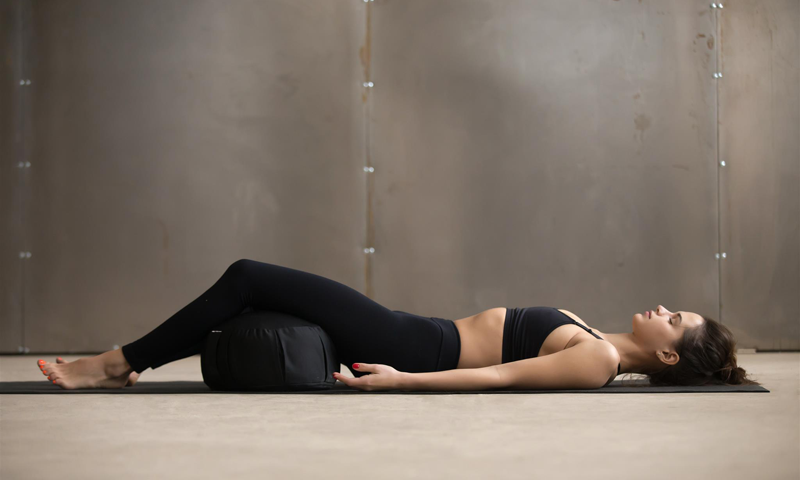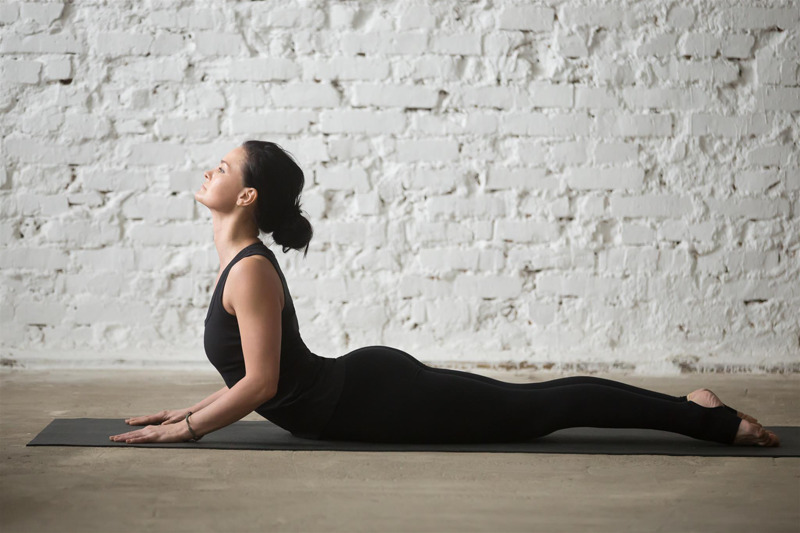
Yoga Poses to Curb Hair Loss
14th September 2018
What are the Basics of Yoga?
21st September 2018Yoga to Cure and Endure

Best known for bringing yoga to the West, yoga guru BKS Iyengar has written a number of books on yoga practice and philosophy. If you’re an avid yogi, you may already be aware of the famous quote by Iyengar: ‘Yoga teaches us to cure what need not be endured and endure what cannot be cured’. In this article, we explore exactly what this means. Before using yoga to cure and endure, make sure to pick up the necessary yoga accessories. If you’re attending a local class, a spacious yoga bag can help with transporting your gear back and forth.
What Does this Quote Mean?
To explain the quote, let’s break it down into two sections. The first half of the quote, “yoga teaches us to cure what need not be endured”, explains how yoga can be used to heal aspects of your health that are affecting your day to day life. For instance, if you are suffering from chronic headaches, you may struggle to partake in certain activities. Over time, this can take the joy out of life and make the pain hard to endure. Thankfully, yoga can often relieve discomfort and target the source of the pain. However, there will be times when yoga can’t relieve the pain. This brings up to the second half of the quote: “yoga teaches us to endure what cannot be cured”. If yoga cannot relieve the physical pain, it can help us to cope with what we cannot change. Iyengar understands that yoga can’t fix every issue. He is not suggesting that it’s the magic cure to all our troubles. What he is saying, is that it can be used as a coping mechanism in hard times. If it cannot relieve physical symptoms, it can relax the mind and help us to deal with the pain. When finding a cure is not an option, it helps us to endure what we cannot change.
Poses to Cure
Happy Baby Pose
At some point in life, we will all suffer from a headache. When this stems from tension in the back, Happy Baby Pose can be used to prevent the discomfort from radiating up the spine. As this pose is restorative, it also encourages the muscles to relax. To practice the asana, lie down on your back with your knees bent. Next, take hold of your feet and gently rock from side to side. You are in Happy Baby Pose. As you move, you should feel a stretch in your lower back and feel the tension melt away. Continue rocking for around 1 minute before lowering your feet back to the mat.
Seated Spinal Twist
If you’re hoping to cure back pain, look no further than Seated Spinal Twist. Helping to realign the spine and stretch the muscles, this posture releases tension in the upper back. To practice the asana, sit on your mat with your legs stretched out. Bend your right knee and place the bottom of your foot flat against the mat. Next, bend the opposite knee and move your left foot under your right leg. If possible, touch your left heel against your right buttock. Secure your right palm on the mat, just behind your right buttock. Finally, rest your left elbow on the outside of your right knee. You are in Seated Spinal Twist. For a deeper stretch, twist your upper body further with each breath. Hold the asana for around 30 seconds before switching sides.
Corpse Pose
Benefitting the entire body, Corpse Pose is another popular healing pose. Encouraging you to relax, the posture taps into your parasympathetic nervous system to heal the body and calm the mind. Improving your circulation, Corpse Pose nourishes your organs with fresh, oxygen-rich blood.
Better still, the asana is simple to practice. To begin, lie down on your mat with your legs stretched out. Rest your arms by the sides of your body and allow your muscles to melt into the ground. You are in Corpse Pose. Hold the posture for as long as it feels comfortable to do so.

Poses to Endure
Cat-Cow
Working to relieve stress and calm the mind, Cat-Cow Pose helps us to endure what we cannot change. As your chest opens, your breathing will become slow and deep. The stretching of your back, torso, and neck will softly stimulate the abdominal organs, helping to relieve bloating and trapped gas.
To practice the asana, begin on all fours. With your hands directly below your shoulders, arch your back toward the ceiling and push your pelvis toward the ground. You are in Cat Pose. Hold the position for a few seconds before arching your back in the opposite direction. Your pelvis should now be raised toward the ceiling. You are in Cow Pose. Hold the asana for a few seconds before repeating the sequence once more.
Childs Pose
Gently stretching the body, Childs Pose helps to reduce stress and fatigue. As you hold the posture, the muscles in your front will relax whilst your back is stretching to release tension.
To practice the asana, kneel on your mat and sit back on your heels. Next, lower your forehead toward the ground until it is resting comfortably in front of your knees. Finally, relax your arms by the sides of your body. You are in Childs Pose. Hold the posture for 30 seconds whilst breathing deeply to increase the stretch.
Supported Heart Opener
This restorative pose works to centre, calm, and soothe the brain. With this in mind, it is thought to be therapeutic for relieving stress. Before practising this pose, make sure you have a comfortable blanket to hand. When you’re ready, fold the blanket to create a support along the length of your spine. Lay the support out behind you and lay back with your torso resting on it. Keeping your legs stretched up, move your feet hip-width apart. Finally, allow your arms to rest by your sides with your palms facing up. You are now in Supported Heart Opener Pose. Hold the pose for around 5 minutes, or as long as it feels comfortable to do so.
In Summary
When practised correctly, yoga can be used to cure a number of health issues. However, there are some things that even yoga cannot heal. When this happens, the holistic therapy can help you to endure what cannot be changed. Whether you are using the practice to cure or endure, remember to wear a supportive yoga bra and some lightweight leggings for best results.

